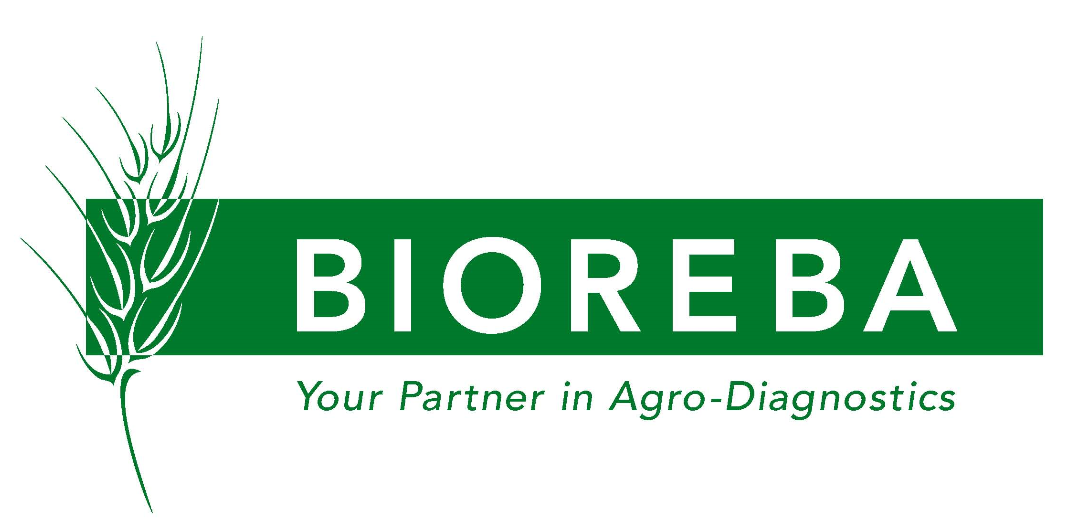

Diagnostic kits
database
Citrus tristeza virus (CTV)
DAS-ELISA
Organism/pest:
Citrus tristeza virus (CTV)
Taxonomic group:
Virus
Manufacturer:
Bioreba


Type of detection:
Serological
Type of test:
ELISA test
Type of method:
DAS-ELISA
Description of the test:
CTV (2) occurs worldwide wherever citrus is growing and is the economically most important viral disease of citrus. It has a narrow range of hosts mostly restricted to citrus species. The virus is transmitted by aphids in a semi-persistent manner. Important aphids are the brown citrus aphid (Toxoptera citricida) and “the melon aphid (Aphis gossypii). There is a great diversity of symptoms; the severity depends on the virus strain and on the host (often also on the scion-rootstock combination). Symptoms include declining (e.g. on sour orange rootstocks), seedling yellows, stem pitting, loss of vigour, wilting, stunting,
yellow-brown staining at bud union and on inner surface of bark, etc. up to complete die-back (e.g. of limes irrespective of rootstocks).
yellow-brown staining at bud union and on inner surface of bark, etc. up to complete die-back (e.g. of limes irrespective of rootstocks).
Type of sample:
Bark; petioles; midribs of tender flushes; pedicels; buttons of fruits;
Number of target:
1
Target:
Citrus tristeza virus (CTV)
Available extraction method:
Samples from 3-4 different locations on the tree should be pooled (1,4,5). About 1 g of plant material is weighed, cut in small pieces and placed in a suitable tube or plastic bag for processing. Samples are homogenized 1:20 (w/v) in extraction buffer «General» (Art. No. 110120). The sample may be homogenized using Homex 6 machine (Bioreba) or any manual roller, hammer, or similar tool.
Available extraction method PDF:
-
Scope:
Polyclonal antibodies were raised in rabbits against a CTV recombinant coat protein (6), enabling in DAS-ELISA (3) the detection of mild as well as decline, seedling yellow and stem pitting isolates from different parts of the world (broad-spectrum reagents). The concentration of CTV in tissue varies; thus, conscious sample collection is important. Bark, petioles, and midribs of tender flushes, as well as pedicels and buttons of fruits are good tissue sources. Field samples should be collected preferably in spring or autumn, whereas sampling during prolonged hot weather should be avoided. Samples from 3-4 different locations on the tree should be pooled (1,4,5). Samples are homogenized 1:20 (w/v) in extraction buffer «General» (Art. No. 110120).
EPDIA validation datasheet:
Other validation data:
- TPS within the Valitest project funded by the European Union's Horizon 2020 research and innovation programme under grant agreement N°773139.
- The product was validated in collaboration with the laboratory of Dr. Manjunath Keremane (National Clonal Germplasm Repository for Citrus and Dates, Riverside, CA, USA) (6).
- The product was validated in collaboration with the laboratory of Dr. Manjunath Keremane (National Clonal Germplasm Repository for Citrus and Dates, Riverside, CA, USA) (6).
Other Validation data PDF:
-
References:
(1) Bar-Joseph, M., Garnsey, S.M., Gonsalves, D., Moscovitz, M., Purcifull, D.E., Clark, M.F., and Loebenstein, G. 1979. Phytopathology 69:190-194.
(2) Bar-Joseph, M., and Lee, R.F. 1989. Descriptions of plant viruses. No. 353. CMI/AAB. 7 pp.
(3) Clark, M.F., and Adams, A. N. 1977. J. gen. Virol. 34:475-483.
(4) Lee, R.F., Garnsey, S.M., Marais, LJ., Moll, J.N., and Youtsey, C.O.1988. In L.W. Timmer, S.M. Garnsey and L. Navarro (Eds): Proceedings 10th Conf., Intern. Org. of Citrus Virol. Riverside, CA. pp. 33-38.
(5) Rocha-Peña, M.A., and Lee, R.F. 1991. J. of Virol. Methods 34:311-331.
(6) Iracheta-Cárdenas M., Sandoval-Alejos B.D., Román-Calderón M.E., Manjunath K.L., Lee R.F. and Rocha-Peña M.A., 2008. Production of Polyclonal Antibodies to the Recombinant Coat Protein of Citrus tristeza virus and their Effectiveness for Virus Detection. Journal of Phytopathology 156: 243-250.
(7) Bulletin OEPP/EPPO Bulletin 34, 155-157: https://onlinelibrary.wiley.com/doi/epdf/10.1111/j.1365-2338.2004.00725.x
(2) Bar-Joseph, M., and Lee, R.F. 1989. Descriptions of plant viruses. No. 353. CMI/AAB. 7 pp.
(3) Clark, M.F., and Adams, A. N. 1977. J. gen. Virol. 34:475-483.
(4) Lee, R.F., Garnsey, S.M., Marais, LJ., Moll, J.N., and Youtsey, C.O.1988. In L.W. Timmer, S.M. Garnsey and L. Navarro (Eds): Proceedings 10th Conf., Intern. Org. of Citrus Virol. Riverside, CA. pp. 33-38.
(5) Rocha-Peña, M.A., and Lee, R.F. 1991. J. of Virol. Methods 34:311-331.
(6) Iracheta-Cárdenas M., Sandoval-Alejos B.D., Román-Calderón M.E., Manjunath K.L., Lee R.F. and Rocha-Peña M.A., 2008. Production of Polyclonal Antibodies to the Recombinant Coat Protein of Citrus tristeza virus and their Effectiveness for Virus Detection. Journal of Phytopathology 156: 243-250.
(7) Bulletin OEPP/EPPO Bulletin 34, 155-157: https://onlinelibrary.wiley.com/doi/epdf/10.1111/j.1365-2338.2004.00725.x
References PDF:
-
User guidelines/protocol/manual:
MSDS sheet:
Others:
-
Video:
-
Website:
Contact:
Country of production:
Web shop:
Product code:
151572 (CTV Complete kit 960); 151575 (CTV Complete kit 480); 151577 (CTV Complete kit 96);
Available kit format:
96, 480, 960 reactions
Components:
Nunc Immuno Plates MaxiSorp F96, certified;
pNPP blister-packed tablets (5 or 20 mg);
Washing buffer (PBST) (tablets or powder);
Substrate buffer (5x);
Conjugate buffer (10x);
Coating buffer (tablets);
Extraction buffer "General" (10x);
Negative control;
CTV positive control;
CTV Citrus tristeza virus Conjugate;
CTM Citrus tristeza virus IgG;
pNPP blister-packed tablets (5 or 20 mg);
Washing buffer (PBST) (tablets or powder);
Substrate buffer (5x);
Conjugate buffer (10x);
Coating buffer (tablets);
Extraction buffer "General" (10x);
Negative control;
CTV positive control;
CTV Citrus tristeza virus Conjugate;
CTM Citrus tristeza virus IgG;
Other information:
-